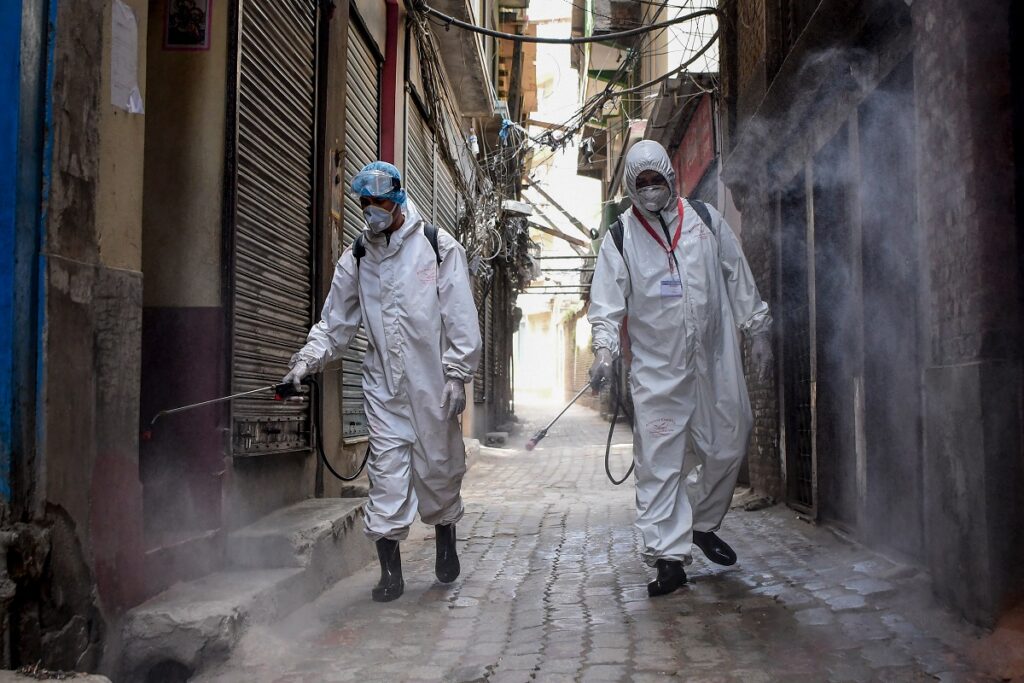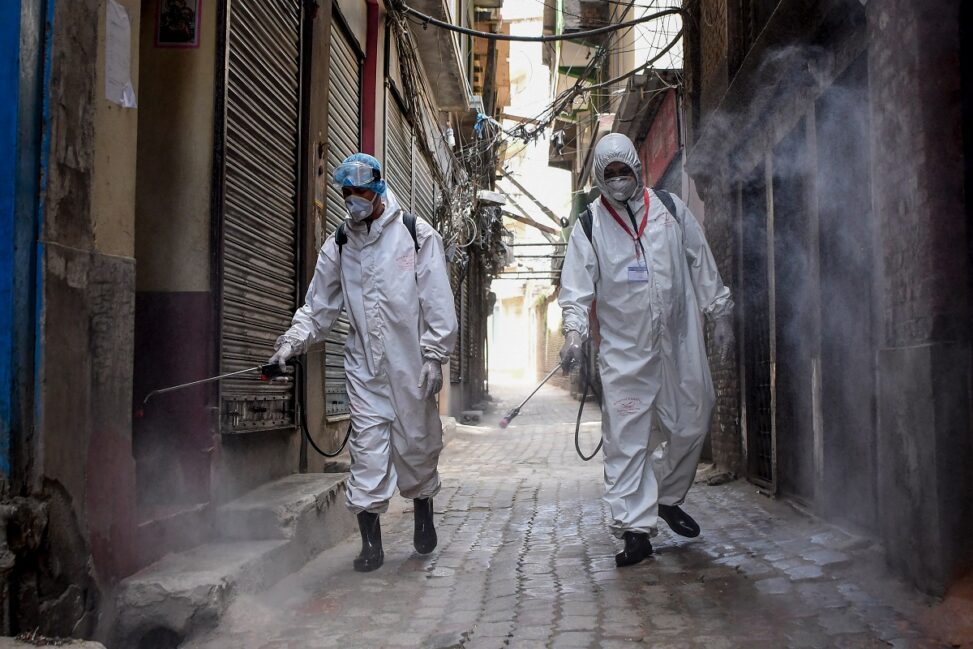APRIL 25, 2020, By Barbara Nimri Aziz

“We’re all going to die!” This feeble appeal came in a Facebook phone call with B. Thapa from deep within Nepal’s eastern hills.
Our conversation was in early March when news headlines from Italy and the U.S. began to alarm Nepalis. With no information about the spread of the disease in his country, this schoolteacher presumed a bleak scenario. “If advanced European societies are swamped with this disease, unable to control it, what can we expect?”
Indeed. The country has a porous 1,000 mile border with India; it has no national health system and its Maoist/Communist-led government has promoted private clinics and hospitals over public healthcare; the prime minister, KP Sharma Oli, had a second kidney transplant without naming any surrogate leader to handle the crisis; there’s almost no medical equipment of the kind needed to test and treat Covid-19; hundreds of thousands of more than five million migrant workers abroad whose remittances keep Nepal economically afloat are now jobless and heading home, and Kathmandu’s swollen population, concerned about congestion in the city, is fleeing to their villages across the land, possibly carrying the virus with them.
Thapa’s fear is repeated by others I speak to. I know about his nation’s truly weak medical system; I agree that the administration is incompetent and deeply corrupt. Yet, I argue, “Nepal’s medics will ensure no one hides the facts. You have an aggressive free press now; it will expose details of any epidemic and force government action.”
A month ago, Nepal had yet to report a single Covid-19 death, and only three infected individuals—all traced to Nepalis who’d arrived from abroad. No one believed those figures; the public’s experience on a host of past issues and endemic corruption results in widespread cynicism; the government cannot handle this crisis, they say.
Most Nepalis, like millions of people across the globe, depend on remittances from overseas workers, and food imports (since the outflow of labor leaves fields uncultivated). What options do Nepalis have to handle a looming epidemic?
Without warning, on March 24th the government imposed a countrywide lockdown. Everyone was to remain inside. Schools and businesses were ordered closed. The quarantine is as severe as anywhere in the world, perhaps with the exception of China. Only policemen are seen in the lanes and roads. A colleague in Lahan village in Janakpur near India exclaims that traveling by motorbike and cycle-rickshaws is prohibited. Shopping for food is restricted; inter-city buses are halted; remittance agencies and banks are closed. Police and special security forces are deployed to Nepal’s border with India to prevent migrant laborers from returning home, creating Nepali refugee camps inside India.
There was one announcement of medical supplies arriving by air from China (ordered by the U.N. Population Fund and various embassies). Otherwise thirty million Nepalis seem to be on their own.
Six weeks into the pandemic, one has to scroll far down the coronavirus world register (ranked by number of infections) –past New Zealand with 17 deaths, Japan (348), Singapore (12), Cuba (49), Ghana (10), Lebanon (22), etc. to find Nepal–with zero deaths and just 48 infections reported (as of April 25, 2020).
Many citizens simply don’t believe the government figures, arguing that it’s incapable of even registering cases. Some Nepali news outlets call out the administration’s incompetence. On the other hand, some citizens suggest that that low rate is indeed a result of their strict adherence to the lockdown and the police’s zero tolerance of noncompliance with the quarantine. Privately, people adopt simple home remedies and advice gleaned from the internet. Families remain especially attentive to the abundant deities they live with and worship. And traditional places of refuge—temples and ashrams whose custodians offer hospitality at any time—are expanding their capacity to feed the needy.
Today, criticism of Nepal’s passive administration is surprisingly tepid. For weeks, returning overseas migrant laborers languished at the border camps. Many jobless men were forced to walk 10-14 days from job-sites in distant parts of Nepal to reach their home village. The government seemed insensitive. (Finally, on April 17, Nepal’s Supreme Court ruled that the government must provide transport to those walking from Kathmandu and other cities to their home destination.)
“We watch what’s happening overseas. Without the service infrastructure of other countries, we must adopt this strict regime,” another colleague insists. “We have no equipment, no medical facilities, no capable governmental services, and no real leadership.”
Nepal is not a country known for self-sufficiency and civic responsibility. Pampered for decades by an excess of foreign aid and favorable press, its people have customarily looked to outsiders for guidance and cash. This epidemic obliges them to find their own solution.
Another month will reveal a clearer picture of Nepal’s state of health. If they somehow escape a battering by this plague, Nepalis’ strict
adherence to the simple formula of distancing and quarantine should bolster national confidence. It could lead to a needed move toward self-reliance. END

